 |
|
 |
|
| About · Contact · Help · Desk · ⚙ · 3,562 articles | Contents · A–Ž index |
Anže Zorman (talk | contribs) |
Anže Zorman (talk | contribs) (Corrected per request) |
||
| Line 28: | Line 28: | ||
}} | }} | ||
{{Contact | {{Contact | ||
| − | | name = Petra | + | | name = Petra Škofic |
| role = Public relations | | role = Public relations | ||
| email = petra.skofic@lgl.si | | email = petra.skofic@lgl.si | ||
| Line 47: | Line 47: | ||
{{wide image|Ljubljana Puppet Theatre 2012 01.jpg}} | {{wide image|Ljubljana Puppet Theatre 2012 01.jpg}} | ||
| − | Established in [[established::1948]], the | + | The [[Ljubljana Puppet Theatre]] (LPT) is the main puppet theatre in Slovenia, running a varied programme of puppet as well as theatre performances, mainly – yet not exclusively – intended for children and youth. Established in [[established::1948]], the theatre encompasses classical puppetry tradition alongside its more contemporary forms and is actively shaping the development of puppetry as such. Involved in various international endeavours and works with domestic as well as international authors, its productions are often included at distinguished Slovene and international theatre or puppetry festivals. |
| − | + | It organises the [[Lutke International Puppet Festival]] and co-produces the [[Golden Stick Festival]], both taking place every second year. Having merged with the [[Theatre for Children and Youth (GOML)]] in 2009, LPT also runs and sets up children's and youth theatre productions. The [[Museum of Puppetry]], a joint project of the theatre and the [[Ljubljanski grad Public Institute]], opened up in 2015 and is stationed at the [[Ljubljana Castle]]. | |
}} | }} | ||
==Background== | ==Background== | ||
| − | + | Initially under the name ''City Puppet Theatre'', LPT emerged as a follow-up to numerous semi-professional puppet groups organised in the region since the beginning of the 20th century. The theatre worked to develop its own mode of expression and soon became the leading puppet theatre in the then Yugoslavia. At first, the performances were based on the marionette technique, but it soon also got engaged in the possibilities of hand puppets. From the seventies onward the theatre has been focusing on advancing the technological and dramatic possibilities of puppetry, cultivating a captivating mixture of classical contents and experimentation. | |
| − | + | Though LPT initially focused on works by Slovene authors, the theatre's most important early performances were adaptations of foreign works. One such production is the ''Spotty the Ball'' [Žogica Marogica], written by the Czech puppeteer Jan Malik, which remains unchanged in the repertory ever since its premiere in 1951. Another timeless hit appears to be the ''Twinkle Sleepyhead'' [Zvezdica zaspanka], written by [[Frane Milčinski - Ježek]] and in the repertory since 1955. It was followed by the same-titled film, the first Yugoslav colour marionette film that has greatly contributed to its huge success. | |
| − | |||
| − | |||
{{Vimeo|195164994}} | {{Vimeo|195164994}} | ||
| Line 64: | Line 62: | ||
==Main activities== | ==Main activities== | ||
| − | Ljubljana Puppet Theatre repertory | + | Ljubljana Puppet Theatre repertory programme is divided into two segments, puppet performances and drama performances, including about fifteen premières annually. Besides its regular performances it runs two festivals and is extremely active on the international stage. |
| − | The theatre cultivates all the main puppetry genres (marionette, hand puppets, Java puppets, shadow puppets, mimic puppets) and preserves more than 2000 puppets from past performances. It keeps an important collection relating to the Slovene puppetry heritage – see [[Ljubljana Puppet Theatre Museum Collection]], now partly incorporated into the [[Museum of Puppetry]]. | + | The theatre organises puppetry workshops for children and adults, devoting attention to educational activities through which the Ljubljana Puppet Theatre wishes to advance the art of puppetry. For this end it thus systemically collaborates with various educational institutions. |
| + | |||
| + | The theatre cultivates all the main puppetry genres (marionette, hand puppets, Java puppets, shadow puppets, mimic puppets) and preserves more than 2000 puppets from past performances. It keeps an important collection relating to the Slovene puppetry heritage – see the [[Ljubljana Puppet Theatre Museum Collection]], now partly incorporated into the [[Museum of Puppetry]]. | ||
| − | |||
{{wide image|Ljubljana Puppet Theatre 2017 Virginija Volk.jpg}} | {{wide image|Ljubljana Puppet Theatre 2017 Virginija Volk.jpg}} | ||
| Line 74: | Line 73: | ||
==Programme== | ==Programme== | ||
| − | Ljubljana Puppet Theatre's programme includes stagings of classical children works as well as performances based on fresh children's texts by established ([[Svetlana Makarovič]], [[Boris A. Novak]], [[Vinko Möderndorfer]]) as well as emerging Slovene and international authors (Roald Dahl, Toon Tellegen, Wolf Erlbruch). | + | Ljubljana Puppet Theatre's programme includes stagings of classical children works as well as performances based on fresh children's texts by established ([[Svetlana Makarovič]], [[Boris A. Novak]], [[Vinko Möderndorfer]]) as well as emerging Slovene and international authors (Roald Dahl, Toon Tellegen, Wolf Erlbruch). The theatre has collaborated with great number of renowned theatre directors (as for example [[Zvone Šedlbauer]], [[Janez Pipan]], [[Robert Waltl]], [[Vinko Möderndorfer]], [[Mile Korun]], [[Silvan Omerzu]]), visual artists and musicians. |
Together with the [[Konj Puppet Theatre]] LGL produced a few striking creations by the renowned Slovene artist [[Silvan Omerzu]], i.e. ''Forbidden Loves'', based on antique motifs, and awarded in Hungary, Croatia and Bulgaria in 2010, and an interpretation of ''Pinnochio'', featuring different puppet techniques and dimensions, acting, shadows and music. | Together with the [[Konj Puppet Theatre]] LGL produced a few striking creations by the renowned Slovene artist [[Silvan Omerzu]], i.e. ''Forbidden Loves'', based on antique motifs, and awarded in Hungary, Croatia and Bulgaria in 2010, and an interpretation of ''Pinnochio'', featuring different puppet techniques and dimensions, acting, shadows and music. | ||
| Line 83: | Line 82: | ||
== International projects == | == International projects == | ||
| + | |||
| + | The LPT is a member of the International Puppetry Association UNIMA, ASSITEJ – International Association of Theatre for Children and Young People, the Slovenian Puppetry Artists Institution, Small Size, an international association focused on productions for early years (under six years of age), and one of the founding members of NEECPA, a network of puppet centres joining primarily the key players from Scandinavia, the Baltic region and Russia. | ||
The International Puppetry Association (UNIMA) congress was first held in Ljubljana in 1933, and then repeated in 1992 again. Then a new biennial festival was initiated, known today as the [[Lutke International Puppet Festival]]. | The International Puppetry Association (UNIMA) congress was first held in Ljubljana in 1933, and then repeated in 1992 again. Then a new biennial festival was initiated, known today as the [[Lutke International Puppet Festival]]. | ||
| Line 94: | Line 95: | ||
==International awards== | ==International awards== | ||
| − | Ljubljana Puppet Theatre has toured through more than 80 cities in 30 countries and received many awards at international festivals, such as the International Puppet Theatre Festival Pierrot (Bulgaria), PIF Festival (Croatia), International Puppet Festival Golden | + | Ljubljana Puppet Theatre has toured through more than 80 cities in 30 countries and received many awards at international festivals, such as the International Puppet Theatre Festival Pierrot (Bulgaria), PIF Festival (Croatia), International Puppet Festival Golden Sparkle (Serbia), World Festival of Puppet Art (Czech Republic), International Theatrical Festival Valise, etc. |
== Venues == | == Venues == | ||
| Line 120: | Line 121: | ||
* [[Museum of Puppetry]] | * [[Museum of Puppetry]] | ||
* [[Lutke International Puppet Festival]] | * [[Lutke International Puppet Festival]] | ||
| − | |||
* [[Golden Stick Festival]] | * [[Golden Stick Festival]] | ||
| − | |||
| − | |||
* [[Ljubljana Puppet Theatre Museum Collection]] | * [[Ljubljana Puppet Theatre Museum Collection]] | ||
6 May 2024
10 May 2024
Ljubljana Puppet Theatre will be visiting the 11th ASSITEJ Hungary Theatre Biennial for Children and Youth and putting on the play "Tunnel". Supported by Embassy of the Republic of Slovenia Budapest.
at the ASSITEJ Hungary Theatre Biennial for Children and Youth
29 Feb 2024
1 Mar 2024
Three performances of "Things Thing - Reči reči", a children's play about things and ... well, things. Produced by Emanat Institute and coproduced by Ljubljana Puppet Theatre, in collaboration with FELD Theater für junges Publikum Berlin.
at the Theaterfestival Starke Stücke
22 Oct 2023
Performance "Things Thing - Reči reči" by Jan Rozman and Julia Keren Turbahn. The work is produced by Emanat Institute, co-produced by Ljubljana Puppet Theatre and made in cooperation with FELD Theater für junges Publikum from Berlin.
at the Internationales Theaterfestival Grenzenlos Kultur
21 Apr 2023
23 Apr 2023
Things Thing, a performance by Jan Rozman and Julia Keren Turbahn, produced by Emanat Institute and coproduced by Ljubljana Puppet Theatre. Related to the Embassy of the Republic of Slovenia Berlin
at the Augenblick MAL! The Festival of Theatre for Young Audiences
13 Apr 2023
7 Aug 2021
8 Aug 2021
A performance Somewhere Else directed by Tin Grabnar, produced by the Ljubljana Puppet Theatre,
at the Materia Magica
18 Jun 2021
Medea, directed by Oliver Frljić and produced by the Slovene National Theatre Maribor, Goodbye directed by Jasna Vastl produced by Ljubljana Puppet Theatre
at the REGIONS International Theatre Festival Hradec Králové
19 Nov 2020
A performance Somewhere Else directed by Tin Grabnar, produced by the Ljubljana Puppet Theatre,
at the Zlatna iskra, Golden Spark Festival
7 Feb 2020
8 Feb 2020
The performance Open the Owl, an intermedia interpretation of The Castle of Owls (1936), directed by Renaud Herbin and co-produced by the Ljubljana Puppet Theatre and TJP – Centre Dramatique National d’Alsace, Strasbourg, France, supported by the Embassy of the Republic of Slovenia London,
at the Manipulate Festival
15 Sep 2019
17 Sep 2019
The puppet miniature Goodbye, directed by Jasna Vastl, and Session Bulgakov, directed by Matija Solce, both produced by the Ljubljana Puppet Theatre; and Snow Queen, directed by Tin Grabnar and produced by the Maribor Puppet Theatre,
at the PIF Zagreb, International Puppet Theatre Festival
29 Jan 2019
The performance The Little Prince, directed by Yulia Roschina and co-produced by the Ljubljana Puppet Theatre and Rijeka City Puppet Theatre,
4 Nov 2018
10 Nov 2018
The performances Little Blue and Little Yellow, directed by Miha Golob and produced by the Maribor Puppet Theatre; Duck, Death and the Tulip, produced by Ljubljana Puppet Theatre; The Forest of Songs, directed by Peter Kus and produced by Federacija Institute; and Shockheaded Peter, directed by Ivana Djilas and produced by the Slovene National Theatre Nova Gorica,
at the International Puppet Theatre Festival
16 Sep 2018
17 Sep 2018
White Camel, directed by Nika Bezeljak and produced by the Maribor Puppet Theatre, and Goose the Bear, directed by Ivana Djilas and produced by the Ljubljana Puppet Theatre,
at the PIF Zagreb, International Puppet Theatre Festival
6 Sep 2018
Open the Owl, directed by Renaud Herbin, a co-production of the Ljubljana Puppet Theatre and TJP – Centre Dramatique National d’Alsace, Strasbourg, France,
at the Synergura International Puppet Theatre Festival
1 Jul 2018
The performance Somewhere Else, produced by the Ljubljana Puppet Theatre,
at the Mediteraneo, Mediteranski lutkarski festival
26 Jun 2018
Open the Owl, directed by Renaud Herbin, a co-production of the Ljubljana Puppet Theatre and TJP – Centre Dramatique National d’Alsace, Strasbourg, France,
at the International Puppet Theatre Festival Blickwechsel
22 Mar 2018
24 Mar 2018
Open the Owl, directed by Renaud Herbin, a co-production of the Ljubljana Puppet Theatre and TJP – Centre Dramatique National d’Alsace, Strasbourg, France, at the Les Giboulées Festival - International ‘Body-Object-Image' Biennial
at the Les Giboulées Festival
4 Mar 2018
13 Mar 2018
Little Blue and Little Yellow, produced by the Maribor Puppet Theatre, Goose the Bear and Somewhere Else, both produced by the Ljubljana Puppet Theatre, supported by the Embassy of the Republic of Slovenia Ankara,
at the Izmir International Puppet Days
9 Feb 2018
10 Feb 2018
The interactive performance Little Salamander Goes Across The Road, directed by Matija Solce and produced by Ljubljana Puppet Theatre, supported by the Embassy of the Republic of Slovenia Paris,
1 Feb 2018
Aquarius, a puppet show performed underwater, directed by Miha Golob and produced by Ljubljana Puppet Theatre, in the framework of Wide Eyes, a European celebration of performing arts for the very young,
at the Baboró international Arts Festival for Children
6 Jan 2018
7 Jan 2018
A Little Lamp, Pea and Feather, written and directed by Katja Povše and produced by the Ljubljana Puppet Theatre,
29 Dec 2017
1 Jan 2018
A Little Lamp, Pea and Feather, written and directed by Katja Povše and produced by the Ljubljana Puppet Theatre,
9 Nov 2017
Katja Gehrmann's Goose the Bear, directed by Ivana Djilas and co-produced by the Ljubljana Puppet Theatre,
at the Revue of Puppet Theatres in Rijeka
18 Sep 2017
19 Sep 2017
Open the Owl, produced by the Ljubljana Puppet Theatre,
at the World Puppet Theatre Festival Charleville-Mézières
18 Sep 2017
20 Sep 2017
Somewhere Else, produced by the Ljubljana Puppet Theatre, and A Child’s Dream of a Star, produced by the Maribor Puppet Theatre,
at the PIF Zagreb, International Puppet Theatre Festival
30 Jun 2017
30 Sep 2017
Italy Cividale del Friuli/Čedad International Centre Vittorio Podrecca – Maria Signorelli’s
The pioneers of European puppetry, an exhibition featuring Milan Klemenčič's puppets (Museum of Puppetry), in the framework of the All Strings Attached: Pioneers of the European Puppetry Behind the Scenes, a Creative Europe project organised in cooperation with Ljubljana Puppet Theatre,
28 Jun 2017
2 Jul 2017
Seminars, workshops, an exhibition and Doctor Faustus, a performance produced by the Ljubljana Puppet Theatre, in the framework of the Creative Europe project All Strings Attached: Pioneers of the European Puppetry Behind the Scenes
19 Mar 2017
20 Mar 2017
A Little Lamp, Pea and Feather, produced by the Ljubljana Puppet Theatre,
at the Teatralia International Dramatic Arts Festival for Children and Young Adults
10 Mar 2017
11 Mar 2017
Duck, Death and the Tulip, produced by the Ljubljana Puppet Theatre,
at the Festival de Casteliers International Festival of Puppet Theatre for Adults and Children
18 Nov 2016
30 Nov 2016
Duck, Death and the Tulip, produced by the Ljubljana Puppet Theatre, You Catch!, produced by Ljubljana Puppet Theatre and Konj Puppet Theatre, and Doctor Faustus, produced by Ljubljana Puppet Theatre, at the 7th Lutkokaz Puppetry Festival
4 Nov 2016
6 Nov 2016
Little Blue and Little Yellow, produced by the Maribor Puppet Theatre, and Duck, Death and the Tulip, produced by the Ljubljana Puppet Theatre, at the 21st International Puppet Theatre Festival
15 Oct 2016
29 Sep 2016
30 Sep 2016
Duck, Death and the Tulip, produced by the Ljubljana Puppet Theatre, and Goldilocks, produced by Mini Theatre, at the 23rd International Children’s Theatre Festival Subotica
24 Sep 2016
25 Sep 2016
17 Sep 2016
Turlututu, co-produced by the Ljubljana Puppet Theatre, at the 11th International Puppet Theatre Festival Synergura
14 Sep 2016
15 Sep 2016
Croatia Zagreb Etno Art Gallery,Travno Cultural Centre,Zagreb Dance Centre,Zagreb Puppet Theatre
Freaks, produced by the Maribor Puppet Theatre, Tomorrow’s Party, produced by the Ljubljana Puppet Theatre, In the Land of Finger Puppets, produced by Zapik Theatre in association with the House of Children and Art, and Snow White, produced by Mini Theatre, as well as a book presentation of Edi Majaron’s Vera v lutko
at the PIF Zagreb, International Puppet Theatre Festival
3 Sep 2016
Duck, Death and the Tulip, produced by the Ljubljana Puppet Theatre, at the 22nd International Puppet Theatre Festival Three Are Too Many, Two – Not Enough
25 Jun 2016
Scary Fairy, produced by the Ljubljana Puppet Theatre, at the Šibenik International Children’s Festival
17 Jun 2016
21 Jun 2016
Practical Advice to Well-Behaved Children, produced by the Maribor Puppet Theatre, and Mission X, produced by the Ljubljana Puppet Theatre, at the 22nd International Festival Theatre European Regions
12 Jun 2016
Duck, Death and the Tulip, produced by the Ljubljana Puppet Theatre, at the 32nd Skupa´s Pilsen International Theatre Festival
9 Jun 2016
Duck, Death and the Tulip, produced by the Ljubljana Puppet Theatre, at the 28th International Theatrical Festival Valise
3 Jun 2016
A Little Lamp, Pea and Feather, produced by the Ljubljana Puppet Theatre
at the NuQ Treff Visual Theatre Festival
8 May 2016
Forest of Songs, conceived, directed and music by Peter Kus with art by Kaja Avberšek, co-produced by Glej Theatre and Federacija Institute, Animal Farm, produced by the Ljubljana Puppet Theatre, and Turlututu, co-produced by the Ljubljana Puppet Theatre
at the International Puppet Theatre Festival SommerTraumHafen
6 Apr 2016
11 Apr 2016
United Kingdom Aberdeen,Cumbernauld,Glenrothes,Lochgelly,North Berwick Cumbernauld Theatre,Lochgelly Centre,North Berwick Community Centre,Rothes Halls,The Lemon Tree
Catch Me!, produced by the Ljubljana Puppet Theatre and Konj Puppet Theatre
at the Puppet Animation Festival in Scotland
29 Mar 2016
31 Mar 2016
19 Mar 2016
20 Mar 2016
A Little Lamp, Pea and Feather, written and directed by Katja Povše and produced by the Ljubljana Puppet Theatre,
at the Teatralia International Dramatic Arts Festival for Children and Young Adults
3 Mar 2016
20 Mar 2016
Turkey Izmir Balçova Kipa AVM,Çiğli Kipa AVM,Fatih Koleji,Han Tiyatrosu,İzmir Mimarlık Merkezi,İzmir Sanat
A Little Lamp, Pea and Feather, produced by the Ljubljana Puppet Theatre, A Story about a Boy and a Penguin and Little Blue and Little Yellow, produced by the Maribor Puppet Theatre, and Little Night Tales and Pulcinella, produced by Teatro matita, the exhibition Contemporary Slovenian Puppet Theatre, the workshop Secret of Life Buttons, and the conference Slovenian Puppetry Today with Jelena Sitar and Mojca Redjko (Maribor Puppet Theatre) during Focus Slovenia,
at the Izmir International Puppet Days
30 Nov 2015
3 Nov 2015
7 Nov 2015
Forest of Songs, conceived, directed and music by Peter Kus, with art by Kaja Avberšek, co-produced by Glej Theatre and Federacija Institute, Animal Farm, produced by the Ljubljana Puppet Theatre, and Turlututu, co-produced by the Ljubljana Puppet Theatre, at the 20th Festival of Puppet Theatre Rijeka
17 Oct 2015
24 Sep 2015
Krabat, co-produced by the Ljubljana Puppet Theatre and Konj Puppet Theatre, at the 9th International Puppet Theatre for Adults Festival "Pierrot"
21 Sep 2015
25 Sep 2015
Turlututu, co-produced by the Ljubljana Puppet Theatre, The Trial or The Woeful Story of Joseph K., produced by the Maribor Puppet Theatre, and The Room, produced by Nebo Puppet Theatre, at the World Puppet Theatre Festival, supported by the Embassy of the Republic of Slovenia Paris,
18 Sep 2015
Animal Farm, produced by the Ljubljana Puppet Theatre, at the 21st Subotica International Festival of Children's Theatres
15 Sep 2015
18 Sep 2015
Little Blue and Little Yellow, produced by the Maribor Puppet Theatre, Duck, Death and the Tulip, produced by the Ljubljana Puppet Theatre, and This Is Ernest, produced by Nebo Puppet Theatre
at the PIF Zagreb, International Puppet Theatre Festival
10 Aug 2015
11 Aug 2015
Turlututu, co-produced by the Ljubljana Puppet Theatre, at the International Festival of Puppet Theatre, supported by the Embassy of the Republic of Slovenia Tel Aviv,
17 Jun 2015
5 Jun 2015
7 Jun 2015
Turlututu, co-produced by the Ljubljana Puppet Theatre, and The Trial or The Woeful Story of Joseph K., produced by the Maribor Puppet Theatre,
at the NuQ Treff Visual Theatre Festival
2 Jun 2015
Turlututu, co-produced by the Ljubljana Puppet Theatre
at the Kaunas International Puppet Theatre Festival
18 May 2015
Animal Farm, produced by the Ljubljana Puppet Theatre, at the Subotica International Festival of Children’s Theatres
19 Mar 2015
27 Sep 2014
11 Sep 2014
20 Sep 2014
100 Years of Slovene Puppet Art, an exhibition by Mini Theatre, Little Salamander Goes across the Road, produced by the Ljubljana Puppet Theatre, and The Boy Who Became a Hedgehog, produced by the Maribor Puppet Theatre
at the PIF Zagreb, International Puppet Theatre Festival
1 Jul 2014
5 Jul 2014
She, produced by Ljubljana Puppet Theatre and The Night Porter, produced by the Slovene National Theatre Maribor, at the Golden Lion - the international festival of the chamber theatre
24 Jun 2014
Little Salamander Goes across the Road, produced by the Ljubljana Puppet Theatre, at the 20th International Festival Theatre European Regions
22 Jun 2014
7 Jul 2014
The Tinderbox, produced by the Ljubljana Puppet Theatre, and the interactive exhibition The Garden of Sound by Peter Kus (Federacija Institute, Forum Ljubljana), at the 54th International Children’s Festival
5 Jun 2014
The Bremen Musicians, produced by the Ljubljana Puppet Theatre,
at the NuQ Treff Visual Theatre Festival
10 May 2014
11 Apr 2014
16 Apr 2014
Little Luna and Big Luna, produced by Ljubljana Puppet Theatre and the Prešeren Theatre Kranj, at the 14th International Naj, naj, naj Festival
15 Mar 2014
8 Feb 2014
You Catch!, produced by Ljubljana Puppet Theatre and Konj Puppet Theatre, at the Small Size, Big Festival
29 Nov 2013
9 Nov 2013
13 Nov 2013
You Catch!, produced by Ljubljana Puppet Theatre and Konj Puppet Theatre
at the Festival Culturescapes
3 Nov 2013
4 Nov 2013
You Catch!, produced by Ljubljana Puppet Theatre and Konj Puppet Theatre, and The Trial or The Woeful Story of Joseph K. produced by the Maribor Puppet Theatre, at the 18th Puppet Theatre Festival Rijeka
26 Oct 2013
13 Oct 2013
14 Oct 2013
The Bremen Musicians, produced by the Ljubljana Puppet Theatre, at the 15th Puppet-Mime Festival of Kilkis
26 Sep 2013
The Bremen Musicians and Bestiaires, (co) produced by the Ljubljana Puppet Theatre,
at the Spectaculo Interesse Festival Ostrava
20 Sep 2013
23 Sep 2013
Animal Farm and Bestiaires, co-produced by the Ljubljana Puppet Theatre
at the Festival Mondial des Théâtres de Marionnettes
9 Sep 2013
14 Sep 2013
Puppetry performances The Gruffalo, produced by the Ljubljana Puppet Theatre, and Salto Mortale, produced by the Maribor Puppet Theatre, and the exhibition Worlds and Heroes, co-organised by Mini Theatre
at the PIF Zagreb, International Puppet Theatre Festival
22 Jun 2013
The Bremen Musicians, produced by the Ljubljana Puppet Theatre, at the
at the International Puppet Festival Hradec Králové
15 Jun 2013
The Bremen Musicians, produced by the Ljubljana Puppet Theatre
at the Bratislava Puppet Theatre Festival
6 Jun 2013
8 Jun 2013
Morrison and the Four Seasons, produced by Mini Theatre, Hole and Little Salamander Goes Across the Road, produced by the Ljubljana Puppet Theatre, and Bestiaires, co-produced by the Ljubljana Puppet Theatre
at the NuQ Treff Visual Theatre Festival
15 May 2013
You Catch! produced by the Ljubljana Puppet Theatre and co-produced by Konj Puppet Theatre at the International Festival of Puppet Theatre for Children - LUT Fest
3 May 2013
5 May 2013
Doctor Faustus produced by Ljubljana Puppet Theatre and Forest of Song co-produced by Glej Theatre
at the SLUK Festival Osijek
15 Apr 2013
17 Apr 2013
13 Apr 2013
24 Mar 2013
23 Mar 2013
1 Apr 2013
When Shlemiel Went to Warsaw produced by the Maribor Puppet Theatre and Forbidden Loves produced by the Ljubljana Puppet Theatre
at the Izmir International Puppet Days
23 Mar 2013
1 Apr 2013
When Shlemiel Went to Warsaw produced by the Maribor Puppet Theatre and Forbidden Loves produced by the Ljubljana Puppet Theatre
at the Izmir International Puppet Days
14 Jan 2013
9 Nov 2012
All Different, All Strange, produced by Ljubljana Puppet Theatre
at the Revue of Puppet Theatres in Rijeka
6 Oct 2012
11 Oct 2012
Lalanit and Doctor Faustus produced by Ljubljana Puppet Theatre, Mišmaš Bakery and Snow-White produced by Mini Theatre, When Shlemiel Went to Warsaw by Maribor Puppet Theatre, and How Jaromir Sought Happiness produced by Glej Theatre
at the Banja Luka International Festival of Children's Theatre
7 Sep 2012
8 Sep 2012
Romeo and Juliet by the Ljubljana Puppet Theatre, and When Shlemiel Went to Warsaw by the Maribor Puppet Theatre
at the PIF International Puppet Theatre Festival Zagreb
10 Jun 2012
Romeo and Juliet directed by Jaka Ivanc and produced by the Ljubljana Puppet Theatre
at the TIBA Festival
27 May 2012
2 Jun 2012
The Tinderbox directed by Jan Zakonjšek Ljubljana Puppet Theatre at the UNIMA Congress
at the Chengdu International Puppet Festival
26 May 2012
27 May 2012
Love Dolls and All Different, All Strange, produced by Ljubljana Puppet Theatre and Snow-White produced by Mini Theatre,
at the NuQ Treff Visual Theatre Festival
20 Sep 2011
Forbidden Loves by Silvan Omerzu produced by Ljubljana Puppet Theatre and Konj Puppet Theatre
at the Spectaculo Interesse Festival Ostrava
8 Sep 2011
5 Sep 2011
11 Sep 2011
Four musicians by Mitja Solce, Lost tone by Peter Kus, produced by Forum Ljubljana and Ljubljana Puppet Theatre
at the PIF Zagreb, International Puppet Theatre Festival
2 Sep 2011
Forbidden Loves by Silvan Omerzu produced by Ljubljana Puppet Theatre and Konj Puppet Theatre
at the International Puppet Theatre Festival PIF
20 Aug 2010
Forbidden Loves by Silvan Omerzu produced by Ljubljana Puppet Theatre and Konj Puppet Theatre
at the Pécs International Puppet Festival for Adults
3 Jun 2010
Sleeping Beauty produced by the Ljubljana Puppet Theatre
at the International Puppet Festival Valise
Initially under the name City Puppet Theatre, LPT emerged as a follow-up to numerous semi-professional puppet groups organised in the region since the beginning of the 20th century. The theatre worked to develop its own mode of expression and soon became the leading puppet theatre in the then Yugoslavia. At first, the performances were based on the marionette technique, but it soon also got engaged in the possibilities of hand puppets. From the seventies onward the theatre has been focusing on advancing the technological and dramatic possibilities of puppetry, cultivating a captivating mixture of classical contents and experimentation.
Though LPT initially focused on works by Slovene authors, the theatre's most important early performances were adaptations of foreign works. One such production is the Spotty the Ball [Žogica Marogica], written by the Czech puppeteer Jan Malik, which remains unchanged in the repertory ever since its premiere in 1951. Another timeless hit appears to be the Twinkle Sleepyhead [Zvezdica zaspanka], written by Frane Milčinski - Ježek and in the repertory since 1955. It was followed by the same-titled film, the first Yugoslav colour marionette film that has greatly contributed to its huge success.
Ljubljana Puppet Theatre repertory programme is divided into two segments, puppet performances and drama performances, including about fifteen premières annually. Besides its regular performances it runs two festivals and is extremely active on the international stage.
The theatre organises puppetry workshops for children and adults, devoting attention to educational activities through which the Ljubljana Puppet Theatre wishes to advance the art of puppetry. For this end it thus systemically collaborates with various educational institutions.
The theatre cultivates all the main puppetry genres (marionette, hand puppets, Java puppets, shadow puppets, mimic puppets) and preserves more than 2000 puppets from past performances. It keeps an important collection relating to the Slovene puppetry heritage – see the Ljubljana Puppet Theatre Museum Collection, now partly incorporated into the Museum of Puppetry.
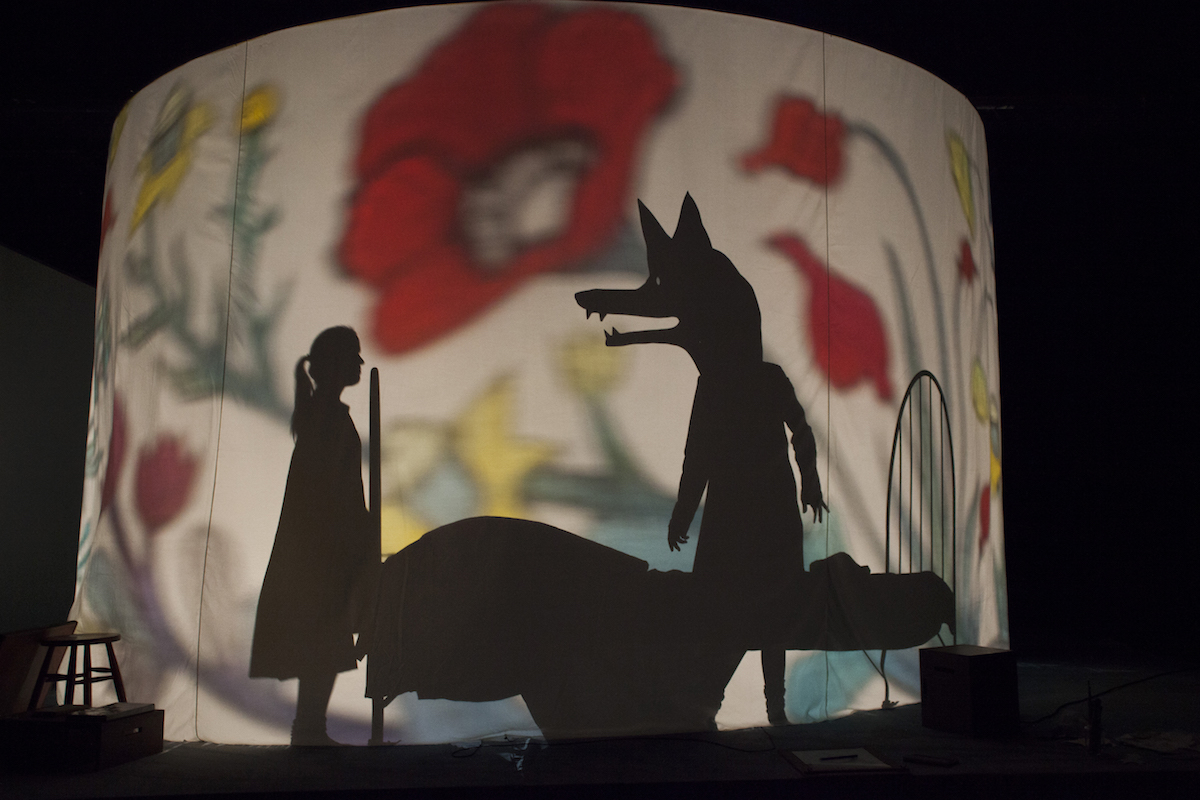 The staging of Virginija Volk (Virginia Wolf), based on the motifs from the picture book by Kyo Maclean and Isabelle Arsenault, 2017
The staging of Virginija Volk (Virginia Wolf), based on the motifs from the picture book by Kyo Maclean and Isabelle Arsenault, 2017
Ljubljana Puppet Theatre's programme includes stagings of classical children works as well as performances based on fresh children's texts by established (Svetlana Makarovič, Boris A. Novak, Vinko Möderndorfer) as well as emerging Slovene and international authors (Roald Dahl, Toon Tellegen, Wolf Erlbruch). The theatre has collaborated with great number of renowned theatre directors (as for example Zvone Šedlbauer, Janez Pipan, Robert Waltl, Vinko Möderndorfer, Mile Korun, Silvan Omerzu), visual artists and musicians.
Together with the Konj Puppet Theatre LGL produced a few striking creations by the renowned Slovene artist Silvan Omerzu, i.e. Forbidden Loves, based on antique motifs, and awarded in Hungary, Croatia and Bulgaria in 2010, and an interpretation of Pinnochio, featuring different puppet techniques and dimensions, acting, shadows and music.
Doctor Faustus [Doktor Faust] is based on the motifs from the first Slovene production of the play (1938) by Milan Klemenčič, the founder of Slovene puppetry, after whom the most prominent Slovene award for achievement in puppetry is named (Klemenčič Award). The performance still uses puppets from the original staging.
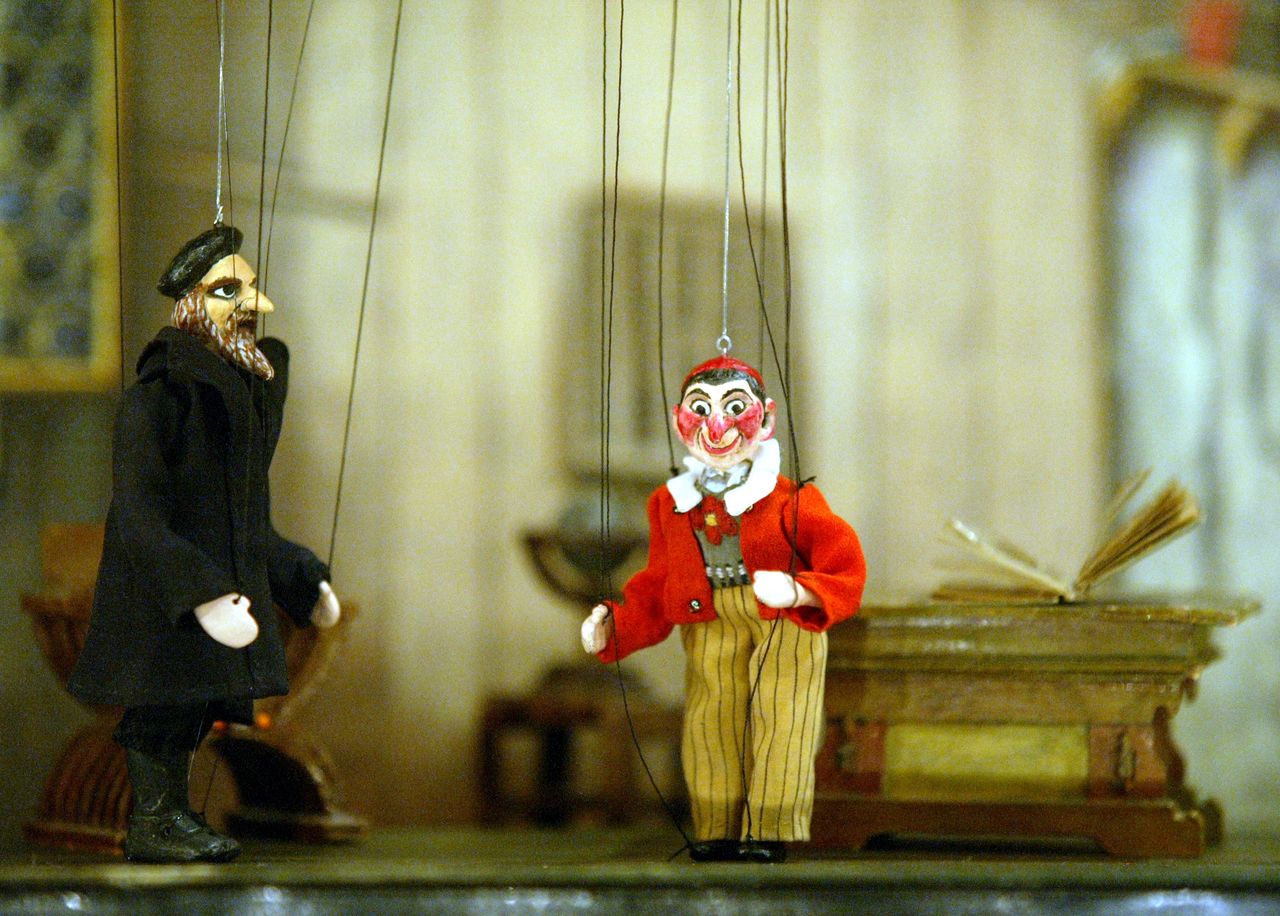 Doctor Faustus performance staged in 2005 with the puppets made in 1938 by Milan Klemenčič. Directed by Jelena Sitar, music by Igor Cvetko, produced by Ljubljana Puppet Theatre.
Doctor Faustus performance staged in 2005 with the puppets made in 1938 by Milan Klemenčič. Directed by Jelena Sitar, music by Igor Cvetko, produced by Ljubljana Puppet Theatre.
The LPT is a member of the International Puppetry Association UNIMA, ASSITEJ – International Association of Theatre for Children and Young People, the Slovenian Puppetry Artists Institution, Small Size, an international association focused on productions for early years (under six years of age), and one of the founding members of NEECPA, a network of puppet centres joining primarily the key players from Scandinavia, the Baltic region and Russia.
The International Puppetry Association (UNIMA) congress was first held in Ljubljana in 1933, and then repeated in 1992 again. Then a new biennial festival was initiated, known today as the Lutke International Puppet Festival.
An example of international co-production was LGL's 2009 performances that included a highly engaged puppet performance for adults about alienation in contemporary society Love Dolls (2009), co-produced with the Dutch DudaPaiva Company, curiously fused modern dance, puppetry, music and multimedia.
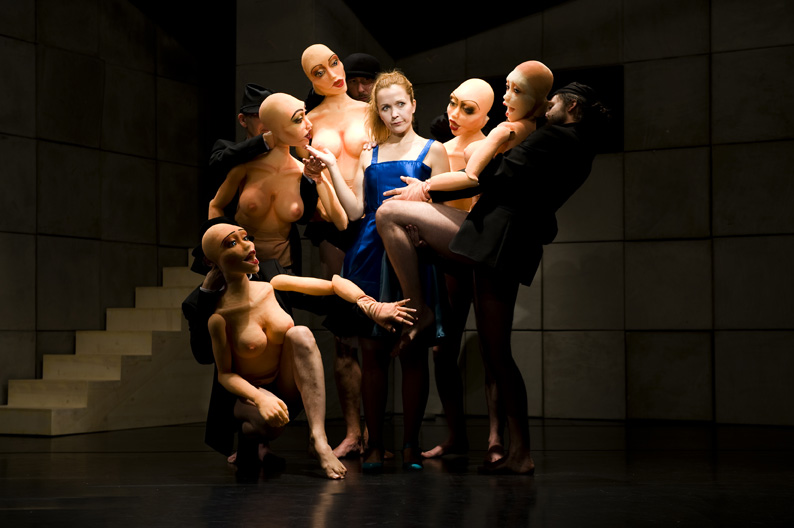 Love dolls by Duda Paiva (Brazil/Netherlands), a puppetry/objects extravaganza with live music, coproduced by Ljubljana Puppet Theatre and Duda Paiva Company in 2009
Love dolls by Duda Paiva (Brazil/Netherlands), a puppetry/objects extravaganza with live music, coproduced by Ljubljana Puppet Theatre and Duda Paiva Company in 2009
Ljubljana Puppet Theatre has been awarded funds from the Creative Europe programme of the European Union for a project entitled All Strings Attached: Pioneers Of European Puppetry Behind the Scenes. A more recent international project is also the Numeric’s Art Puppetry Project, an enterprise of developing and staging the various intersections between puppetry, technology and digital arts.
Ljubljana Puppet Theatre has toured through more than 80 cities in 30 countries and received many awards at international festivals, such as the International Puppet Theatre Festival Pierrot (Bulgaria), PIF Festival (Croatia), International Puppet Festival Golden Sparkle (Serbia), World Festival of Puppet Art (Czech Republic), International Theatrical Festival Valise, etc.
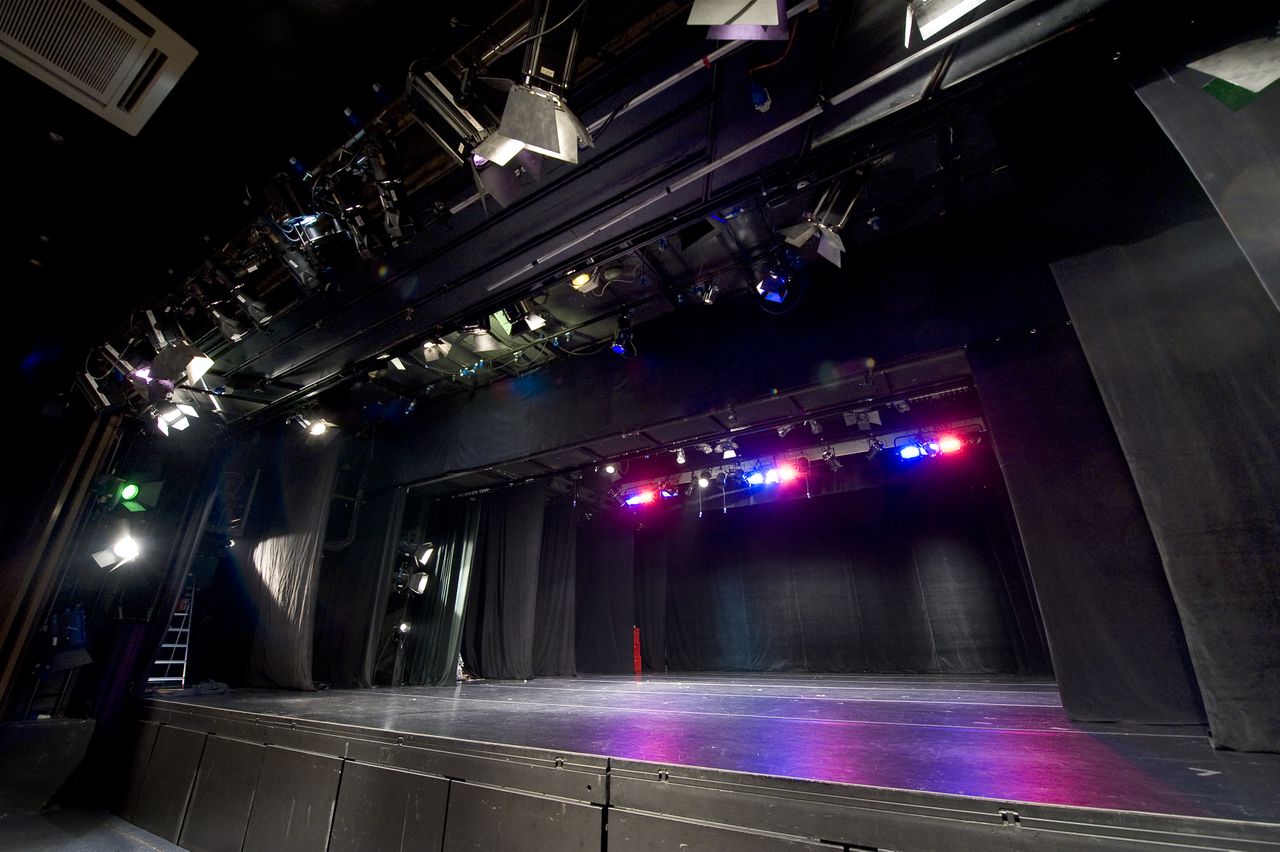 Ljubljana Puppet Theatre, Large hall, 2010
Ljubljana Puppet Theatre, Large hall, 2010
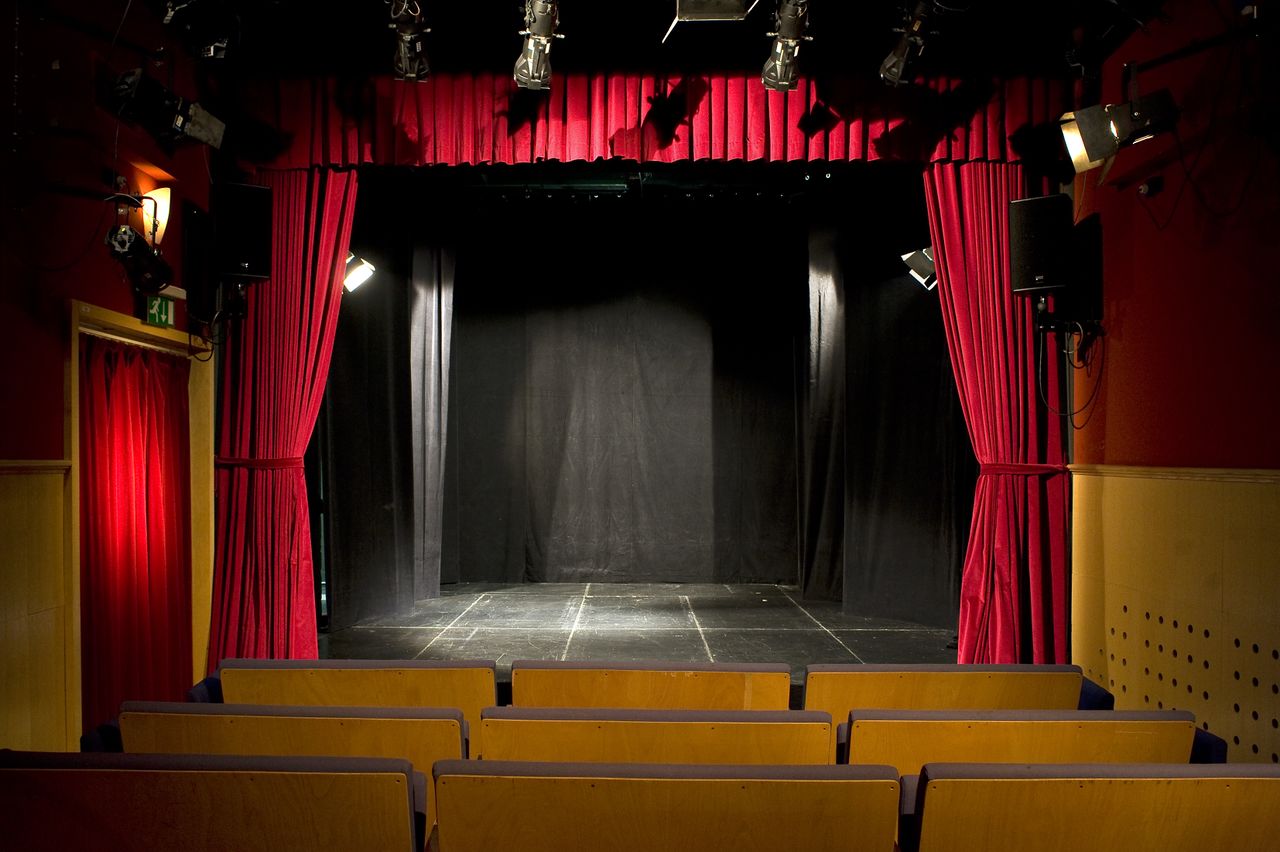 Ljubljana Puppet Theatre, Small Hall, 2010
Ljubljana Puppet Theatre, Small Hall, 2010
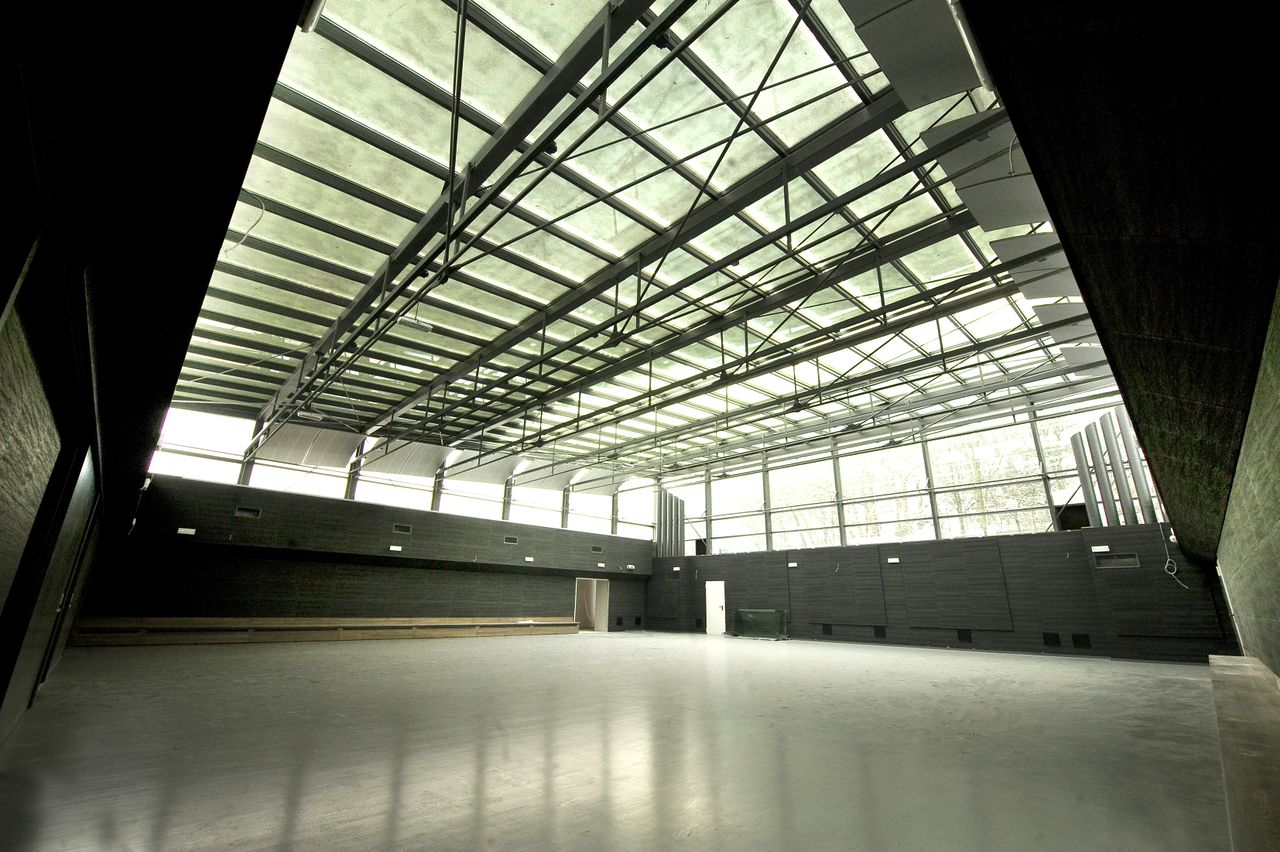 Ljubljana Puppet Theatre, Stage Under the Stars, 2010
Ljubljana Puppet Theatre, Stage Under the Stars, 2010
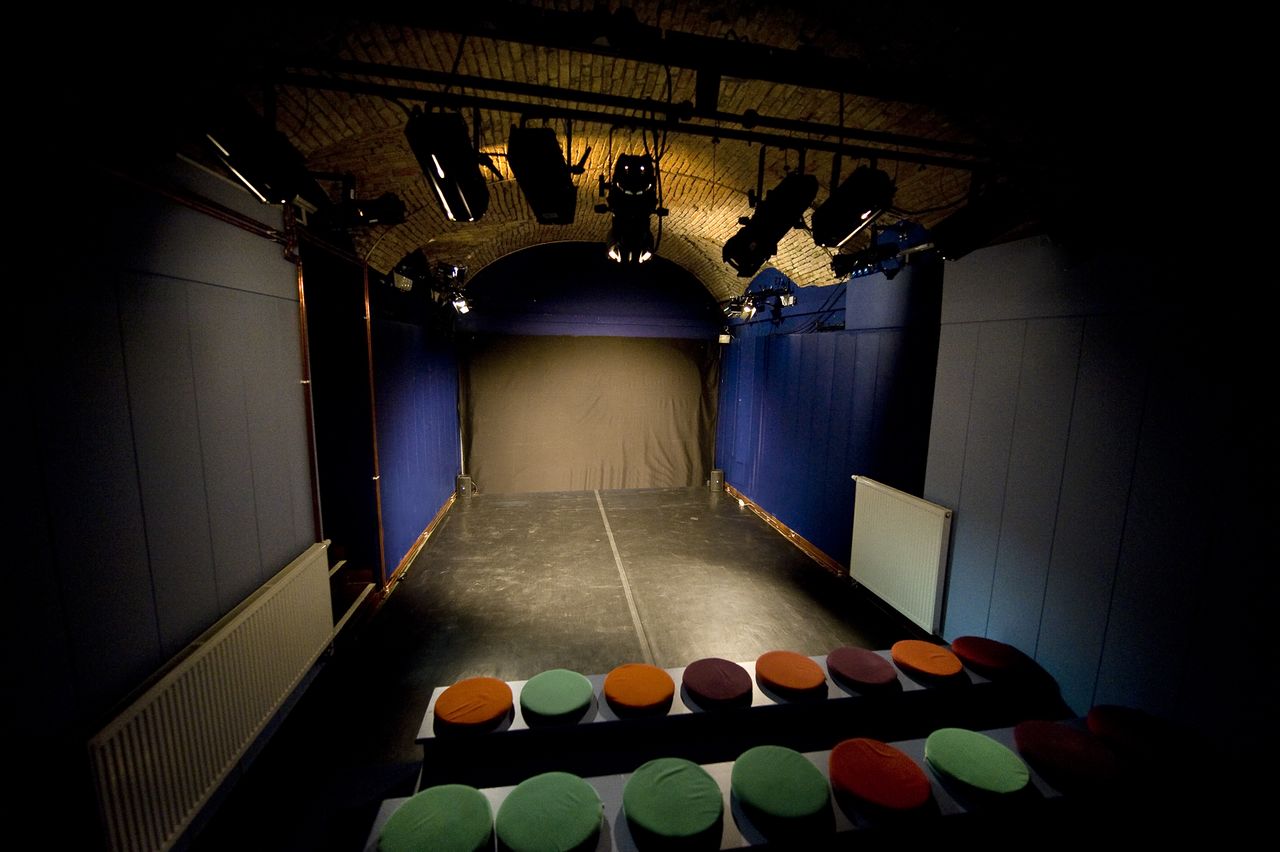 Ljubljana Puppet Theatre, Cultroom, 2010
Ljubljana Puppet Theatre, Cultroom, 2010
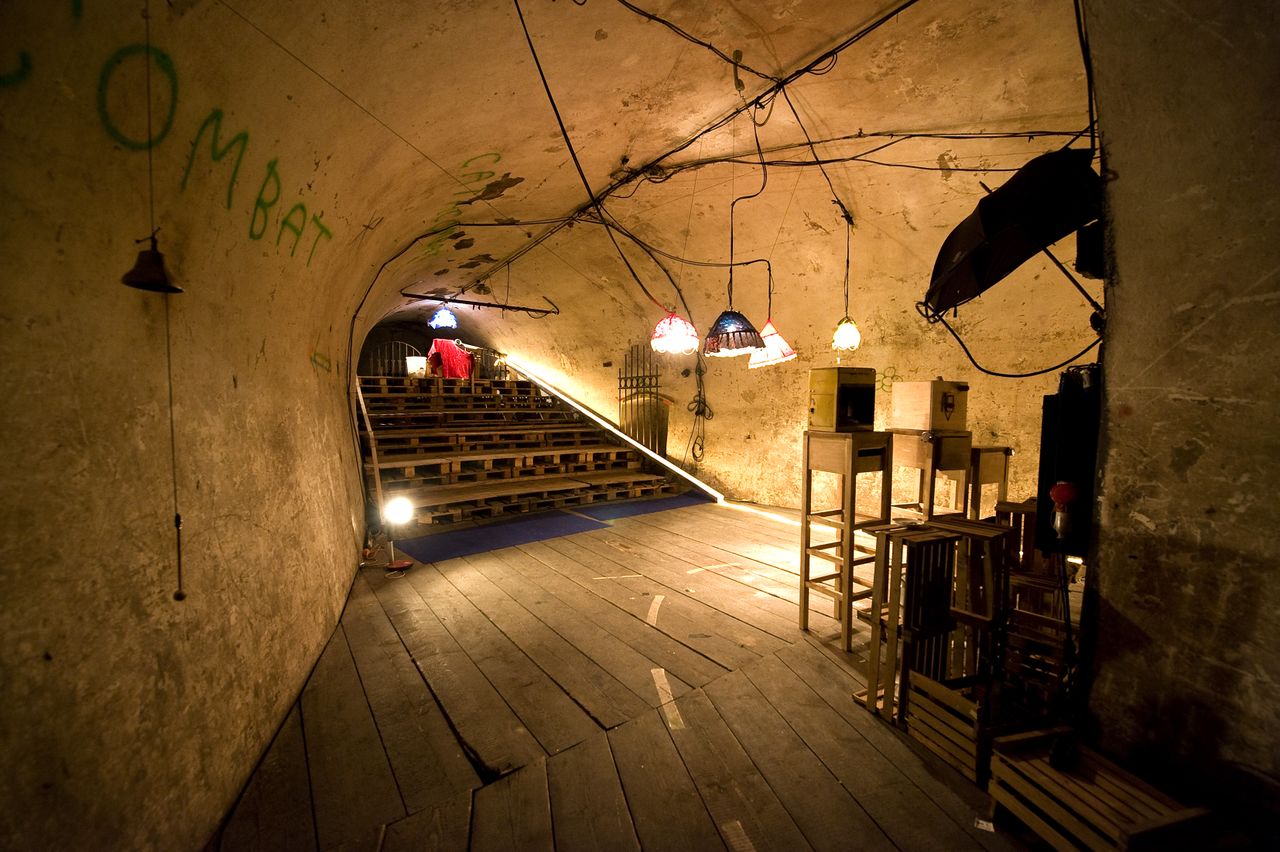 Ljubljana Puppet Theatre, Tunnel, 2010
Ljubljana Puppet Theatre, Tunnel, 2010
Culture.si offers information on Slovene cultural producers, venues, festivals and support services, all in one place. It encourages international cultural exchange in the fields of arts, culture and heritage. The portal and its content is owned and funded by the Ministry of Culture, funded by the European Union Recovery and Resilience Plan and developed by Ljudmila Art and Science Laboratory.